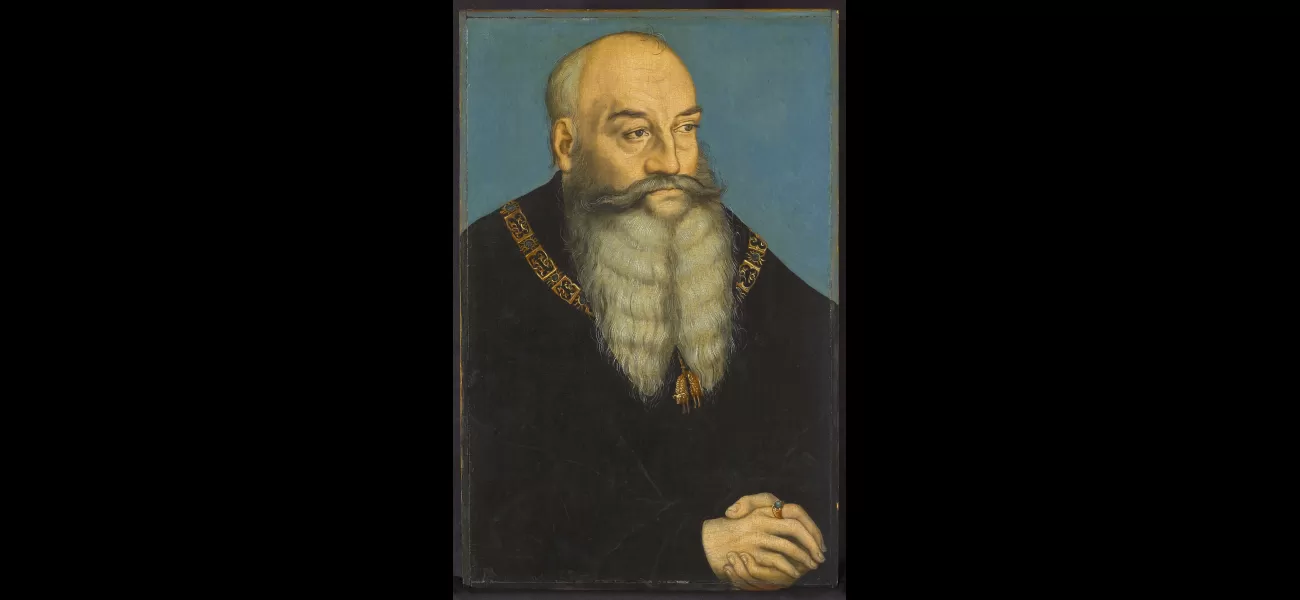Museum to resolve dispute with heirs of Jewish judge who escaped Nazis by selling painting.
PA museum to sell 16th century portrait from Jewish family forced to leave during WWII.
August 26th 2024.

A museum in Pennsylvania has recently made a decision to auction off a 16th century portrait that once belonged to a Jewish family. This family was forced to part with the painting while fleeing Nazi Germany before World War II. The Allentown Art Museum, where the painting has been on display since 1961, has announced that they will be selling the piece as part of a restitution claim by the heirs of the original owner.
The portrait, titled "Portrait of George the Bearded, Duke of Saxony," is attributed to renowned German Renaissance master Lucas Cranach the Elder and his workshop. It was originally purchased by the museum from a gallery in New York, but now, after years of ownership, it will be auctioned off in January at Christie's Old Master sale in New York. The settlement agreement states that the museum and the family of the original owner will split the proceeds from the sale, with the exact terms remaining confidential.
The original owner of the painting was Henry Bromberg, a judge from Hamburg, Germany. He had inherited a large collection of Old Master paintings from his father, a successful businessman. However, when the Bromberg family was targeted and persecuted by the Nazis, they were forced to sell off their artworks in order to flee the country and seek refuge in the United States. Their journey took them through Switzerland and France before they ultimately settled in New Jersey and later moved to Yardley, Pennsylvania.
The descendants of the Bromberg family approached the museum two years ago about the painting, and after entering into settlement talks, they have now reached a fair and just resolution. The museum's president and CEO, Max Weintraub, stated that the moral imperative to act was driven by the fact that the painting had only entered the market due to the Bromberg family's persecution by the Nazis.
One issue that arose during the settlement talks was the question of when and where the painting was sold. The family believed it was sold under duress while they were still in Germany, while the museum's research was inconclusive and suggested it may have been sold after they had already left. In the end, it was decided that both parties would compromise and avoid going to court.
The value of the painting has not yet been determined, as experts at Christie's are still working to confirm the attribution of the piece to Cranach and his workshop. However, works by Cranach are highly sought after and can fetch millions at auction. The family's lawyer, Imke Gielen, stated that they are still searching for about 80 other works that were lost during the Nazi period.
In a statement, the Bromberg family expressed their satisfaction with the museum's careful research into the painting's provenance and the circumstances under which their grandparents had to part with it. They have also secured agreements with the private owners of two other works from their grandparents' collection. Overall, while it is bittersweet to part with a piece of their family's history, the family is grateful that this painting will now be returned to its rightful place in their family's legacy.
The portrait, titled "Portrait of George the Bearded, Duke of Saxony," is attributed to renowned German Renaissance master Lucas Cranach the Elder and his workshop. It was originally purchased by the museum from a gallery in New York, but now, after years of ownership, it will be auctioned off in January at Christie's Old Master sale in New York. The settlement agreement states that the museum and the family of the original owner will split the proceeds from the sale, with the exact terms remaining confidential.
The original owner of the painting was Henry Bromberg, a judge from Hamburg, Germany. He had inherited a large collection of Old Master paintings from his father, a successful businessman. However, when the Bromberg family was targeted and persecuted by the Nazis, they were forced to sell off their artworks in order to flee the country and seek refuge in the United States. Their journey took them through Switzerland and France before they ultimately settled in New Jersey and later moved to Yardley, Pennsylvania.
The descendants of the Bromberg family approached the museum two years ago about the painting, and after entering into settlement talks, they have now reached a fair and just resolution. The museum's president and CEO, Max Weintraub, stated that the moral imperative to act was driven by the fact that the painting had only entered the market due to the Bromberg family's persecution by the Nazis.
One issue that arose during the settlement talks was the question of when and where the painting was sold. The family believed it was sold under duress while they were still in Germany, while the museum's research was inconclusive and suggested it may have been sold after they had already left. In the end, it was decided that both parties would compromise and avoid going to court.
The value of the painting has not yet been determined, as experts at Christie's are still working to confirm the attribution of the piece to Cranach and his workshop. However, works by Cranach are highly sought after and can fetch millions at auction. The family's lawyer, Imke Gielen, stated that they are still searching for about 80 other works that were lost during the Nazi period.
In a statement, the Bromberg family expressed their satisfaction with the museum's careful research into the painting's provenance and the circumstances under which their grandparents had to part with it. They have also secured agreements with the private owners of two other works from their grandparents' collection. Overall, while it is bittersweet to part with a piece of their family's history, the family is grateful that this painting will now be returned to its rightful place in their family's legacy.
[This article has been trending online recently and has been generated with AI. Your feed is customized.]
[Generative AI is experimental.]
0
0
Submit Comment





